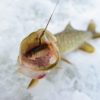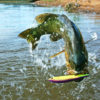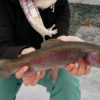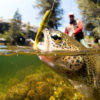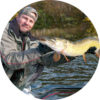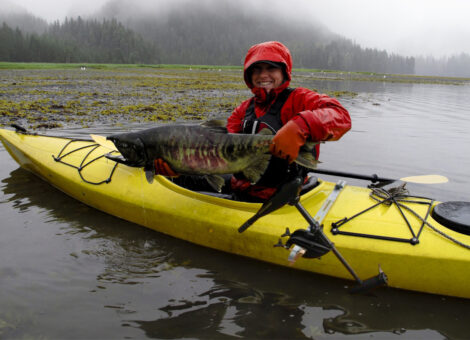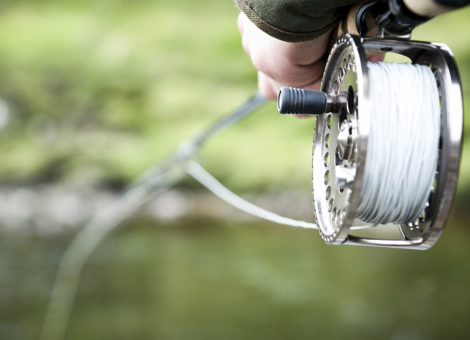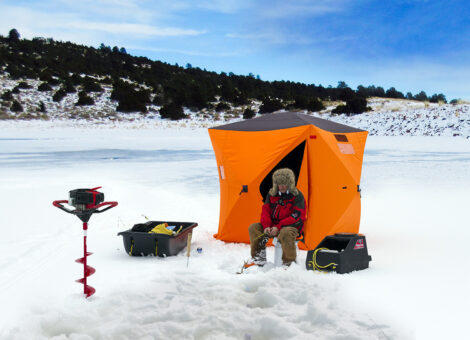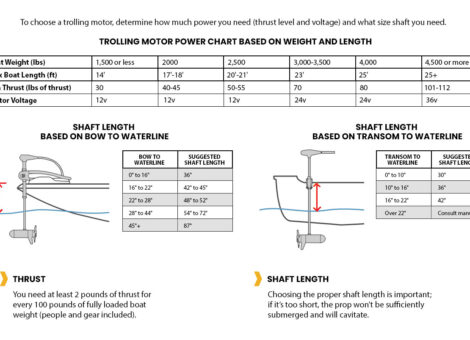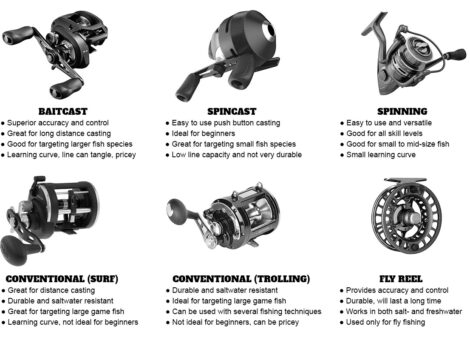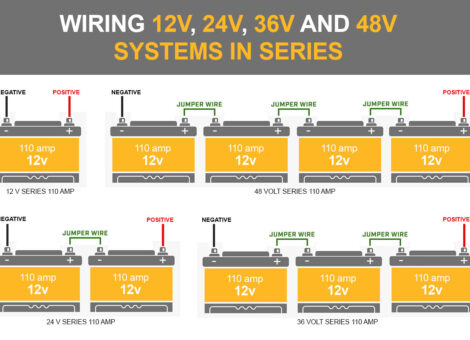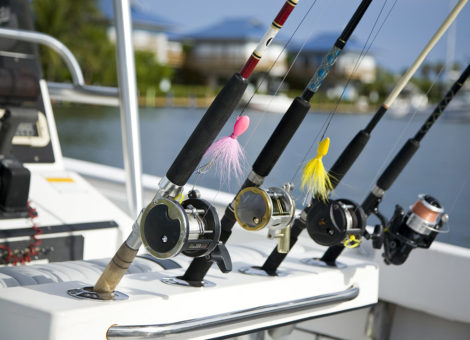The fishing hook is the most important piece of terminal tackle. Knowing the right hook size and type of hook to use is essential to having productive and successful fishing experience. The chart below provides a complete breakdown of the most useful types of hooks for targeting the majority of freshwater and saltwater game fish species.
| Hook Style | Features & Usage |
|---|---|
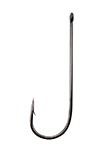 |
|
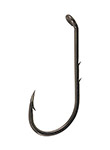 |
|
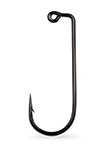 |
|
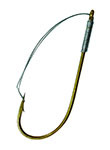 |
|
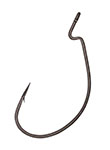 |
|
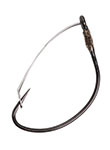 |
|
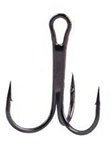 |
|
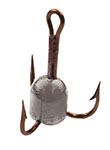 |
|
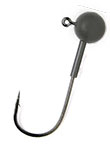 |
|
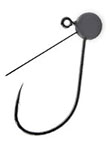 |
|
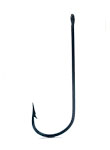 |
|
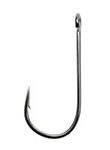 |
|
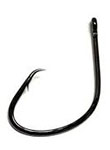 |
|
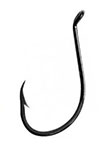 |
|
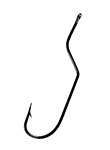 |
|
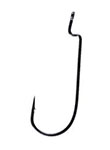 |
|
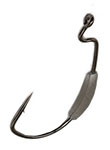 |
|
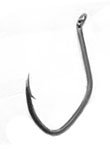 |
|
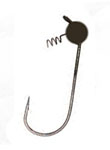 |
|
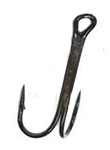 |
|
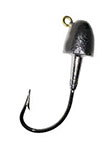 |
|
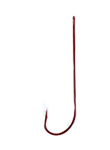 |
|
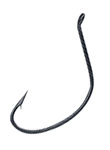 |
|
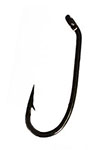 |
|
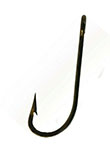 |
|
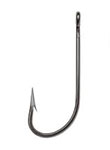 |
|
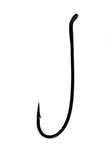 |
|
J Hook

The “J” hook gets its name from its recognizable J shape. It is one of the most common and verstile hooks used for fishing. It can be fished using many different methods and techniques. It can be fished with a variety of live, dead, and soft plastics baits.
The most common coatings for J hooks are black, tin and red. Black J hooks use hardened steel, are sharp, and have a relatively thin diameter. They provide superior penetration when taken by a hungry fish. Tin J hooks offer superior corrosion resistance. They are thicker in diameter then black hooks and use hardened steel. Their points may dull over time and require sharpening for optimum performance. The red color of th hook is thought to mimic the color of wound prey.
It is not uncommon for fish to swallow the J hook whole and for it to set deep in within the fish. This can increase mortality rate and is not ideal for catch and release. When set deep, the fishing line also runs across the fish’s teeth where it can be severed allowing the hooked fish to escape. When using a J hook to target teethy fish it’s advisable to use a strong leader wire that is bite resistant.
J hooks are available with a barb or in a barbless variety. While barbed J hooks have greater holding power, they also can do more damage to the fish. When swallowed they can puncture internal organs and are difficult to remove. Barbless J hooks are ideal for catch and release as they do not traumatize the fish and allow for quick, easy release back into the water.
J hooks are ideal for fish that do not turn away after a strike. For fish that turn away after a strike, other hooks such as the Circle hook are more effective. J hooks also tend to be more effective with fast eating fish. J hooks are ideal for fishing both freshwater and saltwater game fish species including giant tuna, wahoo, sailfish, marlin, mahi mahi, bass, catfish and perch, to name just a few.
Baitholder Hook

The baitholder hook, also referred to as a “bait hook”, is designed to hold bait securely on the hook. There are 2 barbs on the baitholder hook located on the shank that keep the bait from coming off. It’s a very versatile, effective hook that is used for targeting multipe varieties of game fish species in many different conditions. In rough waters the baitholder will keep your bait on the hook and keep your fish from getting away when you get a bite.
As effective as it is, the bards on the baitholder can cause a lot of damage to a fish. If you’re planning to catch and release, the Bait Holder is not the best hook choice. The baitholder is a common go to hook for beginning and novice fisherman unfamiliar with other hook types. However, it’s also popular among experienced anglers.
The baitholder hook is used primary with live or dead natural bait such as worms, insects, clams, shrimp, cut fish, etc. Baitholder hooks come in narrow or wide gape varieties. Baitholder hooks with a narrow shank are ideal for thin baits such as worms. Wide gape baitholder hooks are ideal for use with larger baits to attract larger fish.
Jig Hook

A jig hook is a standard J style hook where the eye of the hook located at the end of the shank is bent in toward the barb at a 60 or 90 degree angle. J hooks can be used with different fishing methods but are commonly used for fly fishing.
Jig hooks offer several advantages over standard fish hooks. Since the eye is set at an angle to the shank, the hook makes more motion as it moves through the water, whereby getting the attention of hungry fish. Jig hooks are also less likely to snag than standard hooks. They ride with the hook point up and are less likely to snag on vegetation, rocks or the bottom.
Many jig hooks are barbless. Barbless jig hooks have a long barbless point (spear) that provides better penetration and holding power for trout fishing. More often than not, a barbless jig hook will penetrate the mouth of the trout near the roof or corner where there is less bone. Not only does a barbless jig hook penetrate and hold, it is easier to remove and far less damaging to the fish.
The jig hook also provides more weight options than a standard J style nymph used for fly fishing trout. The jig hook can fit a broader range of bead sizes. This allows an angler to have the same size fly in several weights by adjusting the bead count.
Weedless Hook

A weedless hook is a hook with a guard to prevent the hook from snagging on vegetation and debris as it rides through the water. The guard extends from the eye of the hook to the point and is typically constructed with a light gauge wire or plastic. When fish strike the weedless hook, the guard bends inward toward the shank revealing the hook point which sets in the fish’s mouth.
Weedless fish hooks are ideal for ponds, lakes and other water systems with dense vegetation. Weedless hooks are particulary useful when you want to fish soft plastics in areas of heavy vegetation. They allow your bait to travel deeper in the water column without the fear of snagging or losing your hook. Weedless hooks also promote a more solid set in a fish’s mouth. Once set, it’s difficult for a fish to expel the hook.
As with most hooks, weedless hooks come in a variety of styles and sizes. When selecting a weedless hook, you’ll need to take into account the same considerations—such as fish species and bait size—as when using other hook styles. Ultimately, the real benefit of the weedless hook is that it allows you to spend more time fishing and less time dealing with snags and lost hooks.
Wide Gap Hook

“Gap” is the distance between the hook point and hook shank. You should always match the hook gap to the size and type of bait you’ll be using. As the name suggests, a wide gap hook has a relatively large distance between the point and shank. A wide gap hook (WGH) is designed to accomodate large baits such as worms, creature baits, soft plastics and oversized swimbaits.
Wide gap hooks come in different styles and designs depending on the intended fishing method and manufacturer. Some wide gap hooks come with a slightly reversed hook point to maintain bait on the hook during hookset. A popular stype of wide gap hook is the EWG (Extra Wide Gap). This hook is used with bulkier soft plastics like tube jigs and beaver style baits. EWGs are popular among bass anglers as the line tie and hook point align with each other making the EWG somewhat weedless and less likely to snag than other hook designs.
Some of the most popular bass fishing rigs for wide gap hooks include the Texas rig and Carolina rig.
Weedless Wide Gap Hook

The weedless wide gap hook is exactly what you’d assume, a wide gap hook with a guard extending from the eye of the hook to the point preventing the hook from snagging on weeds, vegetation and other debris as it pulls through the water.
Like a standard wide gap hook, the weedless wide gap hook exhibits a greater distance between the point and shank than a traditional J style hook. The weedless wide gap hook can accomodate bulkier style baits such as large worms, soft plastics, tube baits, creature baits and swimbaits. It is ideal for targeting larger fish that feed and forage near vegetation, debris and cover.
The weedless wide gap hook is used primarily in freshwater to target a variety of game fish including Bass, Perch, Northern Pike and Walleye. The weedless wide gap hook is a common hook used with Texas Rigs and Carolina Rigs.
Treble Hook

The treble hook is one of the most distinguishable of all bait hooks. It is a fish hook with three hooks that share a single shank. Each shank is equidistant apart at a 120 degree angle to one another. Because it has three points, it’s easy to hook a biting a fish. However, the hooks on a treble don’t typically penetrate as deep or secure as a single J style hook, making it easier for a fish to expel the hook before you reel in your catch.
Treble hooks are are commonly used with topwater fishing lures, jerkbaits, metal jibs/spoons and crankbaits. They are also used with soft body swimbaits, live bait rigs, or they can be fished alone with dough baits when targeting trout, perch and catfish. Treble hooks tend to snag easily are not ideal for fishing dense vegetation or cover.
The treble hook comes in varying sizes, strengths, shank lengths and hook bends. Treble hooks with shorter shanks are often fished using hard baits in weeds and vegetation. Because the hook points are closer to the bait body they do snag as easily. Treble hooks with a shorter shank also tend to hold fish better once set in the mouth. Another popular style is the bend treble hook. The bend treble hook has hook points the run perfectly parallel to the shank creating a round bend in the hook and making it easier to hook hook fish that are not fully commited to taking the bait.
There are certain states where the use of treble hooks is regulated. You should be able to fish most lakes and ponds with a treble hook, but you’ll want to check local regulations before using a treble hook to fish trout streams and rivers. Several states prohibit fishing with a treble hook when using live bait.
Weighted Treble Hook

A weighted treble hook is simply a standard treble hook with a weight cast around the shank. Weighted treble hooks are designed for snagging fish from the bottom of the water column. They are also useful for retrieving objects from the bottom. As with traditional treble hooks there are laws prohibiting and regulating the usage of weighted treble hooks. Snagging fish is prohibited in many states throughout the U.S.
In addition to shank cast treble hooks, there is a second style of weighted treble hook where the weight is secured at the end of the shank following the hook. The benefit of this style is that the weight does not take up any of the space between the shank and the 3 hooks, whereby providing more open space to snag the fish.
Weighted treble hooks range in size from 4/0 to 20/0 ought. 8/0 to 12/0 are the most common hook sizes employed by anglers for snagging salmon. 12/0 tend to snag salmon easier than 8/0, but they’re also more taxing to maneuver and more expensive to purchase.
Notwithstanding restrictions, weighted treble hooks are still commonly used where legal. They’re commonly used for salmon snagging.
Jighead Hook

Jighead hooks are jig hooks with a jighead attached at the shank at the point where the shank makes a 90 angle to the hook eye. A jighead hook may simply be referred to as a “jighead”. The two terms are often used synonymously by anglers. Jighead hooks are used to fish a wide variety of fish. They can be fished as a stand alone hook with bait, or presented with a skirt trailing head and covering the hook. Anglers will often purchase just the jighead hook and then dress it with a skirt or soft plastic to target a specific fish species.
Jighead hooks come in a variety of sizes. As with most hooks, the size of jighead you use will be determined by fish species. Typically, the smaller the fish, the smaller the jighead hook, and vice versa. Smaller jigheads can be used to target species such as perch and crappie. Larger jighead hooks can be used for bass and walleye.
Jigheads can be used for both freshwater and saltwater fishing. For freshwater fishing, jigheads typically do not exceed 2 ounces. When fished in saltwater, jigheads are often larger—particularly when deep sea fishing or trolling for larger fish species. But generally, jigheads remain fairly small.
Jigheads come in various designs including tube heads, bullet heads, stand-up heads, football heads, darter heads, shaky heads, wobble heads, glider heads, aspiring heads, and many more. The most popular jighead design is the round jighead. The design of a jighead will influence the hooks action, bait presentation and qualities underwater.
Weedless Round Jighead

The weedless round jighead is designed with weed and brush guards to prevent snagging. This allows anglers to use the jighead to fish brush piles, weed beds and heavy cover without getting a snag every time they cast. The angler spends more time fishing and less time dealing with snagged or lost hooks.
While the weedless round jighead offers a few big benefits, it also has some drawbacks. One of the biggested downsides I’ve found to using weedless round jigheads is that they can decrease your hook rate. I typically see a higher hook rate using a normal jighead without the weed guard. That being said, if you’re going to fish really dense cover, then a weedless round jighead is the way to go. If you’re fishing weedless flats or open water then a standard jighead is a better choice.
Aberdeen Hook

The Aberdeen hook is similar to a standard J hook but with a slightly squared round bend. It also has a longer shank and wider gap to allow for affixing small live baits—particularly minnows—to the hook without injuring them. The Aberdeen hook is made of light, thin wire that avoids excessive damage to the bait in order to keep it alive as long as possible.
The Aberdeen hook is also easier to remove from a hooked fish. This makes the Aberdeen excellent for catch and release as it causes minimal damage to the hooked fish.
As with most hooks, the Aberdeen comes in a variety of sizes. The size of Aberdeen you use will be based on the type and size of bait, and the species of game fish being targeted. It’s important not to use an Aberdeen hook that isn’t matched to the bait. Using a large bait on a small hook will cover th point rendering the Aberdeen hook ineffective.
Aberdeen Hook size recommendations by bait type:
- Size #6-#2 – cutt bait, small fish strips, worms
- Size #2-1/0 – lugworms, blood worms, ragworms
- Size 2/0-4/0 – large worm baits, sandeels, small squid, whole bait fish
- Size 5/0-6/0 – larger squid, live fish, mackerel head, and fish parts
Siwash Hook

What makes the Siwash hook different than other hooks is that it features an open eye that allows it to be quickly and easily attached to any spinner, spoon, or plug that you choose. It also has a long, ultra-sharp hook point which easily and firmly sets in the mouth of a fish—making it an excellent alternative to traditional treble hooks. Anglers will often replace the treble hook on their favorite spoons, spinners and trolling lures with a Siwash hook for use in rivers and streams where treble hooks are restricted.
Circle Hook

The Circle hook is among the top five hooks used by anglers worldwide. It is similar in appearance to a J-hook but has more of a circle shape. Where the J-hook has an upward-facing point and medium-length shank, the Circle hook has a slightly shorter shank with an inward-facing point. The popularity of the Circle hook stems from its high catch rate and low mortality rate. The Circle hook is rarely swallowed and easy to extract without damaging the fish. It’s an ideal hook for catch and release.
The Circle hook’s unique design allows it penetrate only an exposed surface on a fish’s mouth, typically the corner of the mouth. When a baited Circle hook is swallowed, it does not snag on the internal organs or gills of the fish as other hooks do. Instead, as the hook is reeled in, it sets when it reaches the fish’s mouth. Where J style hooks require a traditional hookset with a flip of the wrist, to set a Circle hook you simply begin reeling in. In fact, if you attempt to set a Circle hook by performing a traditional hookset, you’re likely to yank the hook out of the fish altogether.
There are two types of of Circle hook styles sold on the market — offset and non-offset. For offset Circle hooks the point does not align with the shank. Offset Circle hooks are believed to have a higher set rate. For non-offset, or inline hooks, the point aligns with the shank. While both styles are popular, non-offset Circle hooks tend to have a higher mouth hook rate and lower mortality rate than offset Circle hooks. Consequently, many fishing tournaments now require anglers to use only non-offset Circle hooks to maximize fish survival rates.
Octopus Hook

Octopus hooks are a J style hook with a short round shank and bend. The Octopus hook is also similar to Circle hook without a dramatic bend. Similar to a Circle hook, the point of the Octopus hook is inward facing, but not nearly to the same degree as the point of a Circle hook. Unlike either the J-hook or Circle hook the eye on the Octopus hook is bent backwards at an angle.
The Octopus hook is typically used for presenting live or cut bait. It can also be used with soft plastic baits, but rarely with hard lures. The Octopus hook can be used to target both salt and freshwater game fish species. It is a popular hook choice when fishing trout, catfish, walleye, snapper, shark, etc.
Keel Fly Hook

The Keel Fly hook is similar to a streamer hook with a slight bend along the shank just before it meets the eye. Sometimes the bend is more pronounced to form a “Z” shape. With the Keel Fly hook the fly material is tied to the front part of the shank just above the bend next to the eye. The materials used to create the fly typically extend down covering the hook point and is usually 3-4 times the length of the hook. These materials hide the hook from the vision of hungry fish and protect the point from snagging on rocks and vegetation. Keel Fly hooks come in a lot of variations but the basic hook design and positioning of fly materials is mostly the same. The Keel Fly hook
Worm Hook

The Worm hook is used for fishing soft plastic worms and creature baits. It is similar in appearance to a J-hook with a very pronounced “Z” shaped bend near the eye. The offset bend typically consists of two separate 90 degree angle bends.
There are variety of worm hook options and styles. A few of the more popular include wide gap, extra wide gap (EWG) and weighted. Most worm hooks have a relatively wide gap between the eye and hook. This large gap is useful for holding large plastic worm baits while still providing ample clearance so the hook point can penetrate the mouth of the fish and set securely.
Worm hooks are commonly used for bass fishing and rigging. The most common hook sizes for bass fishing range from #2 all the way to 8/0. Of course, your hook size will be determined by your target fish size and bait.
Weighted Worm Hook

If you guessed that a weighted worm hook is a worm hook with weight added, then you’d be correct. Weight is added to the worm hook to provide increased casting distance and to force the hooker deeper in the water column. The weight is typically added to the hook mid shank or higher along the shank near the eye, but before the bend.
Sickle Hook

The Sickle hook derives its name from the sickle shape of its bend. The Sickle hook is similar in appearance to a J-hook or Octopus hook with the addition of a roughly 45 degree angle just between the bend of the hook and the shank.
The unique bend of the Sickle hook serves two purposes. First, the angle is intended to keep live bait lower on the hook to provide a better presentation. Second, and more importantly, the unique angle of the hook in theory holds a hooked fish on the hook more securely than more traditional rounded hooks. Once hooked, it’s difficult for a fish to shake lose from the Sickle hook.
Sickle hooks can be used to catch a variety of fresh and saltwater fish. They’re particularly popular for crappie fishing. Just out of the package they tend to be sharper than standard crappie jigs. They also maintain a sharp point longer than many jig hooks. In addition to Crappie fishing, Sickle hooks are used for Salmon rigs.
Shaky Jighead

The Shaky Jighead, sometimes referred to as a Rocking Jig head, is a finesse bait used when fishing pressure is high and fish aren’t biting. The jig and plastic combo of the Shaky Jighead produces a natural action in the water that can entice even the most finicky bass to bite.
The Shaky Jighead comes in a variety of sizes and styles. The key to the Shaky Jighead is to use as light of a jighead as possible while still maintaining your bait at the bottom of the water column. The most common size for the shaky jighead is between 1/16 and 1/4 ounces. However, on windy days when fishing in current, or in deeper waters, you may want to increase jighead weight to 1/4 to 5/16 ounces.
The two most popular designs for the Shaky Jighead are the round head and standup head. The round jighead provide a rocking motion as it is worked through cover. The round head design is most effective when fishing gravel bottoms and open water. The standup jighead is best for 6 to 9-inch soft plastic worms and jerkbaits on rocking bottoms. The standup design minimizes snags and allows the bait to stand up when resting on the bottom. As it moves through the water it provides an tantalizing action.
Shaky Jigheads are typically fished with a finesse worm, but can be used with a variety of soft plastics, creature baits, and beaver baits. One of the more popular Shaky Jigheads is the “Shaky Worm Jighead”. The Shaky Worm Jighead provides very natural and attractive motion to bass when worked slowly through the water.
Double Hook

Double Hooks are similar in appearance to treble hooks. However, where the treble hook has three points equidistance apart, a double hook has two points positioned on the same side of the shank with about a 60 to 90 degree angle between them.
Double hooks provide a higher percentage of hookups than single hooks. A double hook can hook a fish in both the upper and lower jaw, where a single hook can hook in only one location. Double hooks are most common used on skirted trolling lures and plugs. They’re also used to replace treble hooks on lures.
Bullet Jighead

The Bullet Jighead is a jig hook with a bullet shaped head. The bullet shaped head of the jig hook provides an optimal hydrodynamic profile that allows the hook to descend quickly through the water column and provide a natural presentation. The Bullet Jighead is ideal for finesse fishing and can cut effortlessly and quickly through the water. Th Bullet jighead also tends to perform better and snag less in cover and heavy vegetation than other jighead designs.
Carlisle Hook

The Carlisle Hook is a thin J-shaped hook with a round bend, extra-long shank and straight offset point. Its long shank is designed to keep live bait, including large worms, insects and minnows, on the hook and alive. The long shank also helps to prevents fish from swallowing the hook or biting through the leader line.It is an ideal hook for panfish or bream fishing.
Carlisle Hooks often have a “kirbed” point that is slightly offset to the left of the shank. The offset hook is intended to increase hook rate as compared to a standard inline hook point.
Kahle Hook

The Kahle Hook is somewhere in between a J-hook and Circle hook. The point of the Kahle hook curves toward the hook’s eye, similar to that of a Circle hook. The Kahle Hook also has a a very wide gap. It’s gap is narrower than that of a circle hook, but wider than a J-hook. The shank and bend of a Kahle Hook are somewhat similar to a J-hook. It’s almost as if the J-hook and Circle hook got together and made a baby.
The Kahle Hook is very versatile. It can be used for fishing either live or cut bait, but is most often used for presenting live bait such as fathead minnows, shiners, and shrimp. It’s equally at home in freshwater or saltwater.
It comes in a range of sizes and colors and can be rigged to support a variety of presentations. The Kahle Hook is effective for targeting bass, speckled trout, catfish, redfish, flounder, drum, pompano and many more.
The Kahle Hook is constructed with a thinner gauge wire than circle hooks, so it’s more suited to keeping live bait alive longer on the hook. It’s wide gap will penetrate the mouth of a fish and hook securely, but sometimes results in gut hooks when bait is swallowed whole. The Kahle Hook is not ideal for catch and release fishing.
When it comes to hook set, the Kahle Hook exhibits a dual nature. You can set it by applying tension as you would with a standard a J-hook, or you can let the Kahle Hook auto-set as with a Circle hook.
Sproat Bend Hook

The Sproat Bend Hook, also referred to as a Sproat Hook, is a versatile, general-purpose straight point hook that is used for freshwater and saltwater fishing. It works equally well for live and cut baits.
When constructed with a light gauge wire it makes an excellent wet or dry fly hook. The Sproat Hook flattens out as the bend nears the point. Its this unique design that in theory makes the hook superior for hooking nibbling trout that have not fully commited to taking the bait.
As a multi-species hook, the Sproat Bend Hook can hook a lot more than just trout. It’s also ideal for targeting Striped Bass, Flounder, Plaice, Bluefish and whole range of game fish species.
Kirby Hook

The Kirby Hook features a round bend very similar to that of the Sproat Bend Hook. However, where the Sproat Bend Hook has a straight point the Kirby Hook has a point that is offset at an angle to the shank. The offset point of the Kirby is designed to provide better penetration and a higher hookset rate. Once the hook is set, it’s difficult for fish to shake loose.
The Kirby Hook is used for fishing both freshwater and saltwater fish species including yellowtail, wahoo, bass, tuna and other gamefish. It is a favorite of sea anglers targeting bottom feeding flat fish such as cod, sea bass, whiting, rays and bream. It’s an ideal hook to use with natural baits including sand worms, crabs and cut fish.
O’Shaughnessy Hook

The O’Shaugnessy Hook is similar in design to the Sproat, Kirby and Limerick hooks, but with a point that is bent just slightly outward. The O’Shaugnessy is a strong hook that is forged with extra strong wire. It is used to dress heavy wet flies and target slow biting gamefish. Its also a favorite hook among trotline anglers.
It’s a versatile hook that can be used for both freshwater and saltwater fishing, but is favored for saltwater bottom fishing.
Steelhead and Salmon Hooks

Steelhead and Salmon hooks have long, sharp points and strong shanks for hooking and securing powerfull steelhead and salmon. These hooks also feature a turned up eye which widdens the gap to allow for better hooking. Steelhead and Salmon hooks are ideal for tying Salmon and Steelhead flies.


